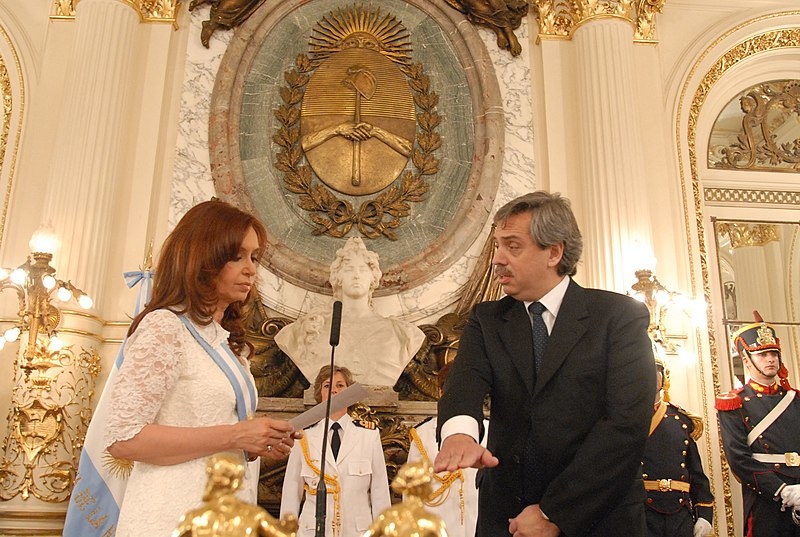The Nationalism of Cristina Fernández de Kirchner
Argentine President Cristina Fernández has increased her appeals to nationalist sentiment to build domestic political support.
There were no surprises in Argentina’s presidential election on Oct. 27, when leftist candidate Alberto Fernández, with former President Cristina Fernández de Kirchner as his running mate, defeated the center-right incumbent Mauricio Macri. That outcome had been anticipated by primary elections—essentially a preview of the vote—held in August, when the Fernández-Fernández ticket trounced Macri as Argentina’s economy continued to deteriorate. The new administration will take office on Dec. 10.
For Cristina Fernández, this is all personal vindication. When her presidency ended in 2015, she left behind economic stagnation and a trail of corruption allegations. She attempted a political comeback in the 2017 legislative elections, and, although she won a Senate seat herself, her party was soundly defeated by Macri’s coalition. Although she had immunity from the various corruption charges as a member of the Senate, her political career seemed to be nearing its end.
But then, last spring, she made an unexpected and bold move for reconciliation with Alberto Fernández, a onetime political ally who had served as chief of staff to her late husband, former President Nestor Kirchner, and held the same position briefly during her own presidency. Alberto Fernández later broke with Cristina, criticizing her administration publicly. In May, in order to seize on Macri’s sinking popularity and reunite the fractured Justicialist Party, she decided not to run for the presidency herself but instead anoint the more moderate Fernández as the Peronists’ candidate—with her as vice president.
[...]
Argentine President Cristina Fernández has increased her appeals to nationalist sentiment to build domestic political support.
How will the Fernández administration’s policies affect the country’s economy and businesses in the long-run?
Given today’s realities, the glowing terms some used to describe US-Argentine relations in the 1990s do not make sense. But neither does the excessively negative talk heard in Buenos Aires and Washington.
 Víctor Bugge / Presidencia de la Nación Argentina / CC BY 2.0
Víctor Bugge / Presidencia de la Nación Argentina / CC BY 2.0